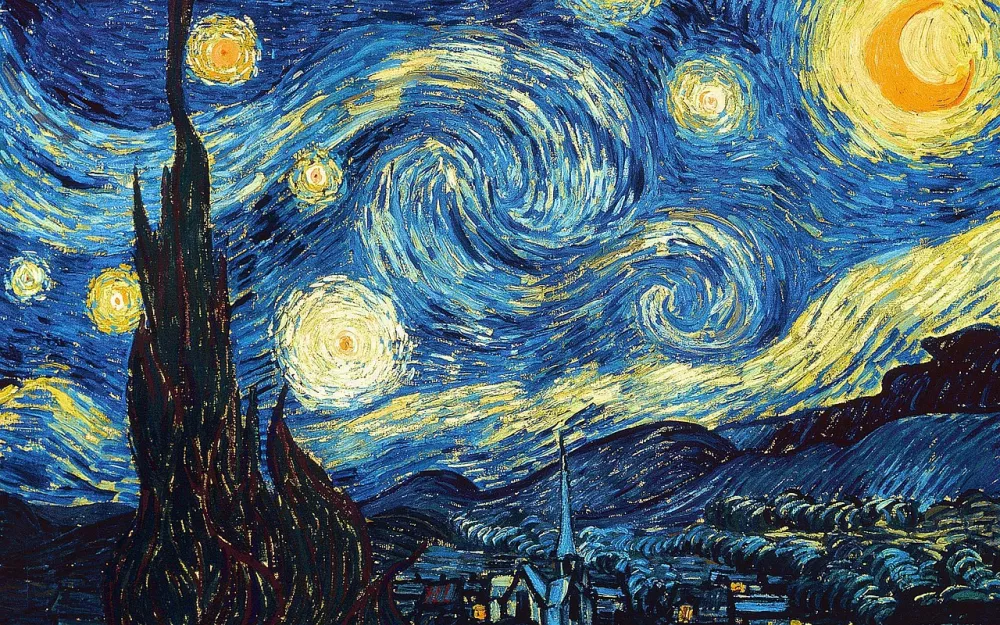Amsterdam Guide 
The “Venice of the North” offers an unforgettable atmosphere, which includes 165 canals, 1281 bridges, houses with tilted facades or coffee shops selling marijuana. More people cycle here than drive, so rent a bike and ride around the iconic canals or visit the floating flower market – the only one of its kind in the world. And if you like to try local specialties, don’t miss the local haring (raw herring), kibbeling (fried pieces of fish) or traditional croquettes from the vending machine.
Sights and attractions - What you shouldn't miss in Amsterdam. Tips for the most famous museums, historical buildings, neighborhoods.
Accommodation - Tips for pleasant and popular accommodation from hostels to luxury hotels, accommodation on a boat or in a campsite.
Typical food and drink - What you should definitely try in Amsterdam - herring, cheese or local sweets such as stroopwafels or poffertjes.
Practical tips - Here you will learn about local transport, customs, safety, museum tickets and the like.
Weather - When is the best time to visit this port city? When does it rain the most and when do you have a chance of sunny weather?
Celebrities - Which famous personalities lived and created in Amsterdam?
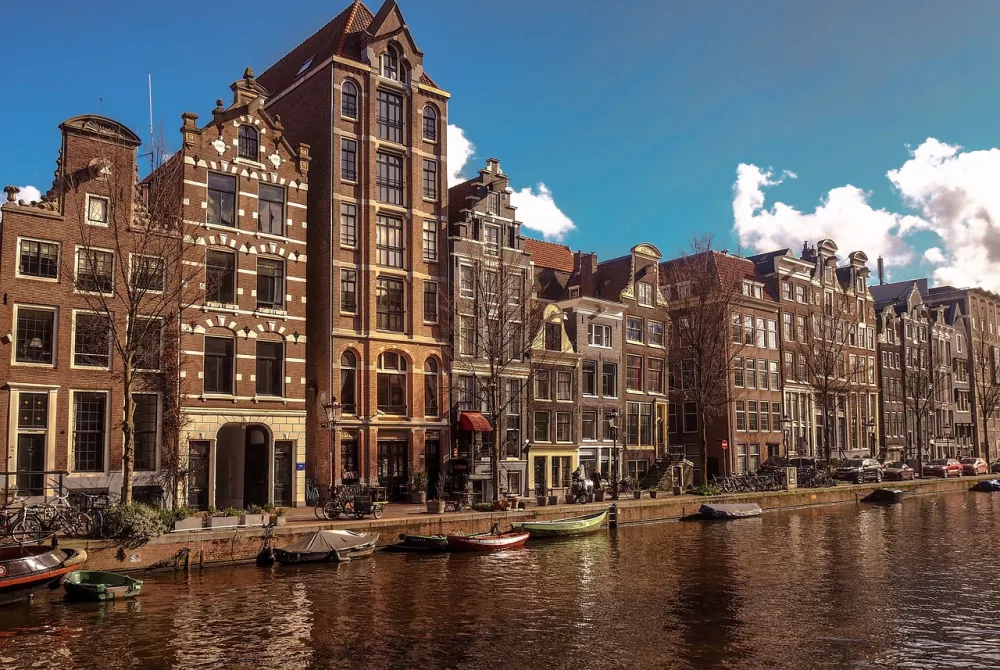
The capital of the Netherlands, known for its rich history, cultural heritage and unique atmosphere, is located in the province of North Holland. It has earned the nickname “Venice of the North” due to its canals, bridges and characteristic architecture. It is home to around 900,000 inhabitants, with its metropolitan area comprising over 2.5 million people.
Amsterdam was founded in the 12th century as a small fishing village on the Amstel River, where the first dam (Dutch for “dam”) was built. During the 17th century, known as the Dutch Golden Age, the city became one of the most important commercial centres in the world thanks to maritime trade and the expansion of the Dutch East India Company. Today, Amsterdam symbolises tolerance, innovation and cosmopolitan life.
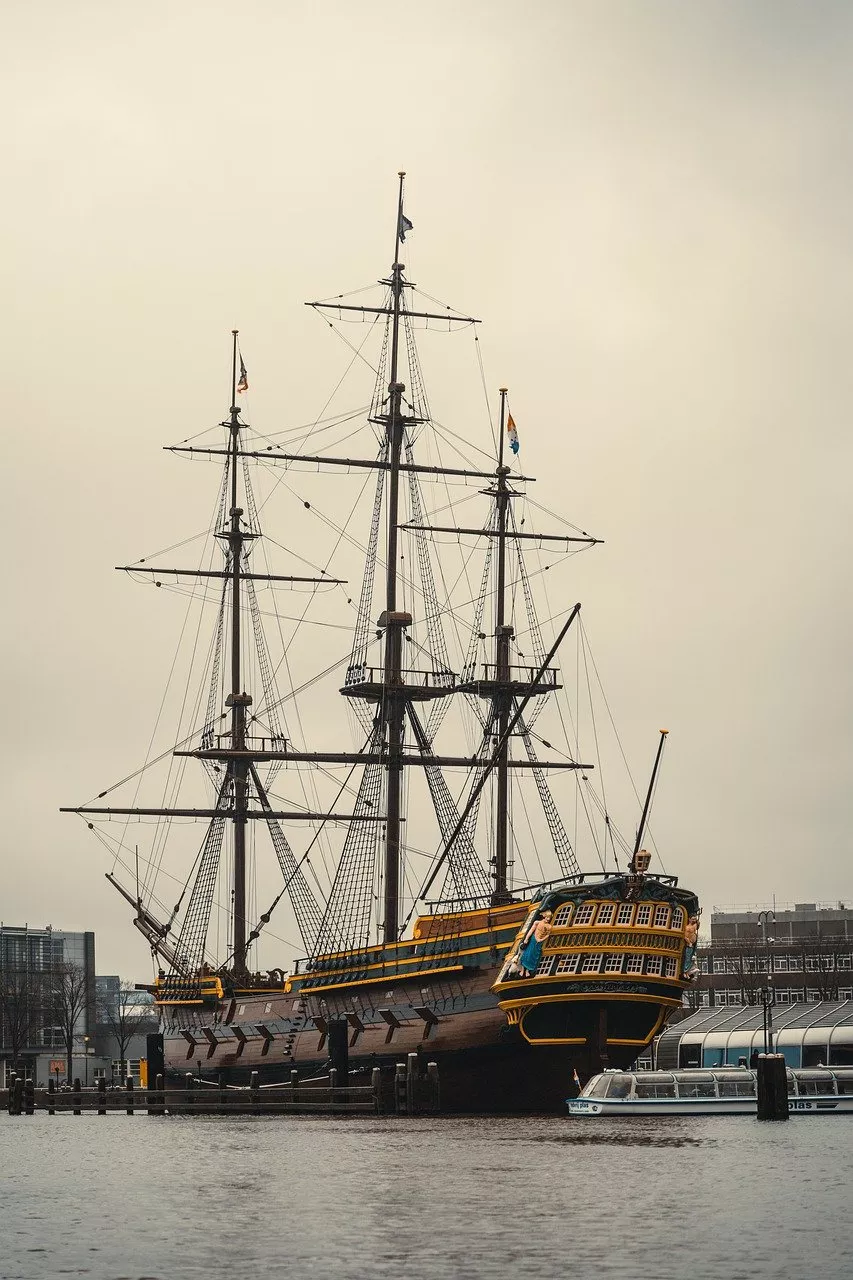
The city offers many attractions, including its picturesque canals, which are listed as UNESCO World Heritage Sites. In the world-famous Rijksmuseum, you can see works by artists such as Rembrandt and Vermeer. The Van Gogh Museum houses the largest collection of works by the famous Dutch painter. Nature lovers will certainly appreciate the city's largest park, Vondelpark.
Amsterdam is also a place for foodies. Typical Dutch dishes include cheeses such as Gouda or Edam, traditional raw herring called haring, and sweets such as stroopwafels - waffles filled with caramel. The most famous local beers include Heineken and Amstel.
Cyclists will also love Amsterdam. A network of cycle paths covers the entire city, making cycling an ideal means of transport. Public transport includes trams, buses, metro and ferries.
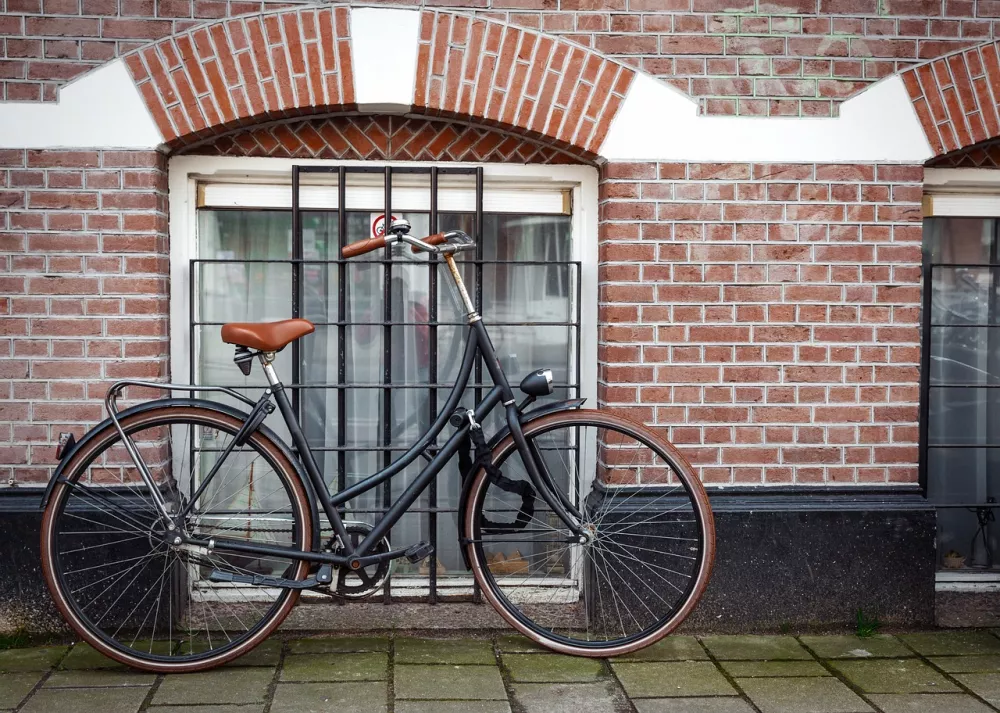
The city is also known for its tolerance and openness - from its cultural diversity to unconventional tourist attractions such as the red light district.
Visitors especially like Amsterdam in the summer, when the weather is perfect for walks and canal rides. We recommend booking your accommodation in advance and consider purchasing a museum card, which allows you to enter many monuments and museums at a bargain price.
Monuments and attractions
Royal Palace – The Royal Palace of Amsterdam (Koninklijk Paleis) was originally built as a town hall and opened in 1655. The building stands on 13,659 wooden piles, which were sunk into the soft ground, as the whole of Amsterdam is located on marshy ground and islands. This technical peculiarity allowed the creation of one of the largest and most magnificent buildings of its time, which the people of Amsterdam at that time proudly called the "eighth wonder of the world". Today, the palace is one of the three official residences of the Dutch royal family and is used mainly for ceremonial and state occasions.
Address: Nieuwezijds Voorburgwal 147, Amsterdam.
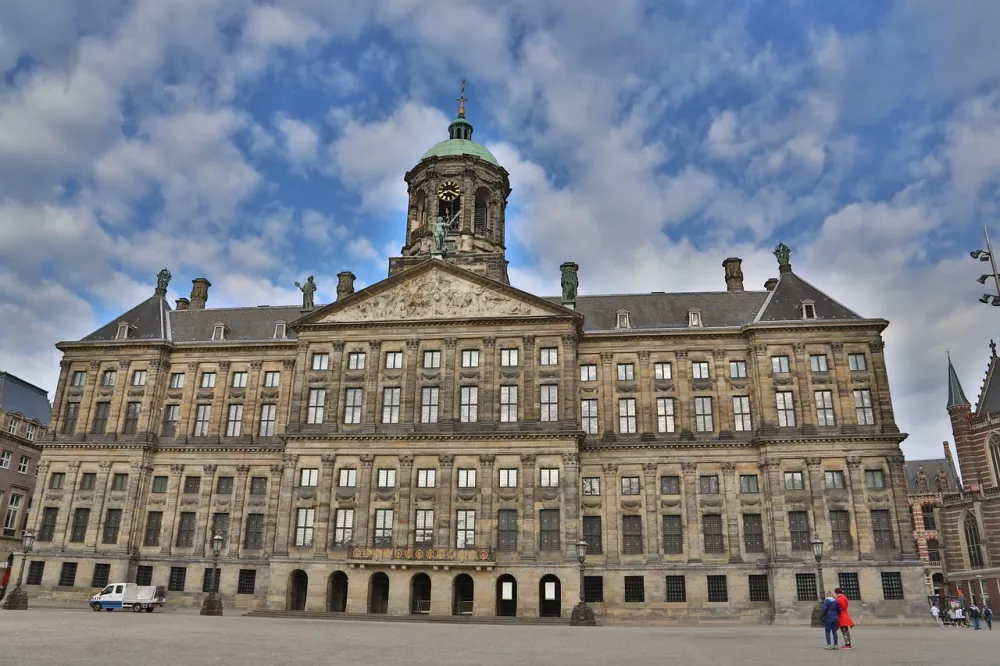
Anne Frank House – The historic house where Anne Frank hid during World War II. The museum brings to light the period of persecution and discrimination against Jews during World War II. The hidden space, called the “Secret Annex” (Achterhuis), was only accessible through a secret door behind a sliding bookcase. It was here that Anne wrote her famous diary, which became one of the most famous literary testimonies of the Holocaust.
Address: Westermarkt 20, Amsterdam.
Oude Kerk – A former Protestant church built in the early 13th century, it has been converted into an art gallery and concert hall. It is the oldest building in the city and can be visited in the middle of the red light district. Inside is the tomb of Saskia van Uylenburgh, the first wife of the famous painter Rembrandt, and 10,000 people are buried under the church floor, including important naval admirals. The Oude Kerk was not only a religious building in the past - during wars it was used as a shelter for rare paintings and archives, and partly also served as a registry office and stock exchange.
Address: Oudekerksplein 23, Amsterdam.
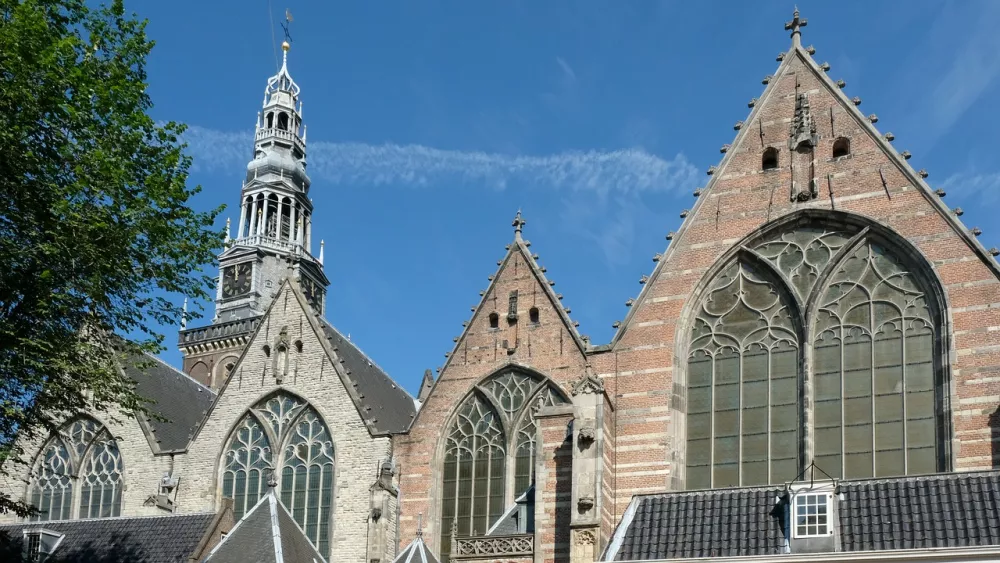
Van Gogh Museum – A museum dedicated to the life and work of the famous painter Vincent van Gogh. The museum houses the only surviving palette that the famous painter actually used. This palette, still covered in its original colors, offers a unique and authentic insight into van Gogh's creative process. In addition to the master's permanent exhibition, which includes over 200 of his paintings, 500 drawings and more than 800 letters, the museum also exhibits works by young artists.
Address: Museumplein 6, Amsterdam.

Rijksmuseum – The National Museum, with its extensive art collections, including works by Rembrandt and Vermeer, is the largest and most important museum in the Netherlands and the only museum in the world with a cycle path running through the centre, dividing the building into two parts.
Address: Museumstraat 1, Amsterdam.
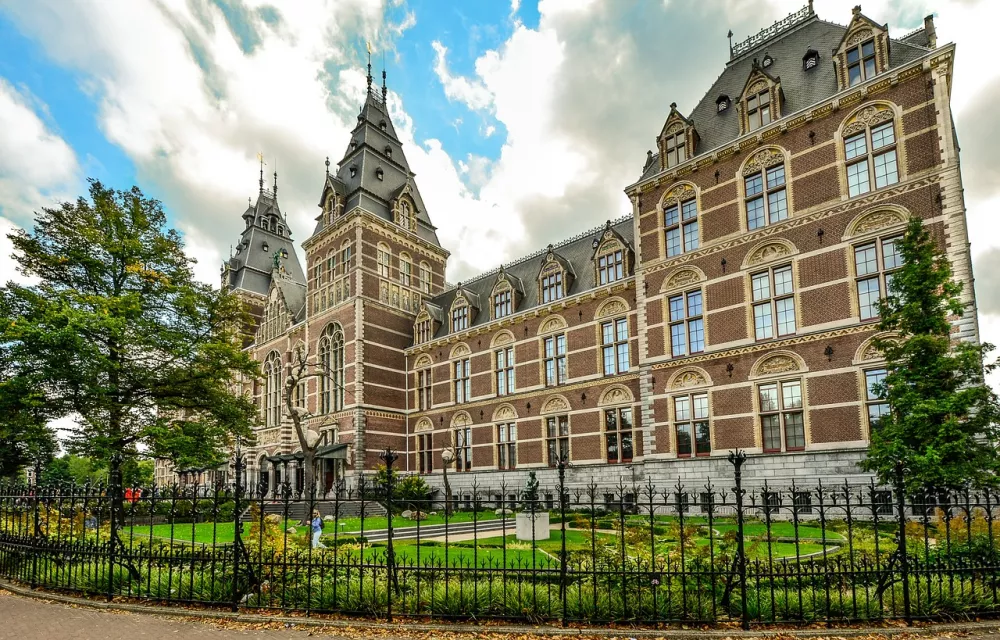
Amsterdam Canals – A system of scenic waterways, listed by UNESCO. The Amsterdam canals form a unique network of more than 100 kilometers of waterways, 165 canals and over 1,700 bridges. Most of the canals were built in the 17th century during the Dutch “Golden Age”, and the three main canals – Herengracht, Prinsengracht and Keizersgracht – form concentric semicircles around the historic city center. The canals divide Amsterdam into 90 islands.
Magere Brug (Slim Bridge) – The most famous bridge over the Amstel River in Amsterdam. The middle part of the bridge opens to allow boats to pass through. The original bridge was so narrow that two pedestrians could barely fit on it, earning it the nickname “magere” – meaning “skinny” or “narrow” bridge. The current appearance of the bridge dates back to 1934 and is intended for pedestrians and cyclists only. The bridge was made famous by the James Bond film “Diamonds Are Forever”.
Address: Magere Brug, Amstel 81, Amsterdam.
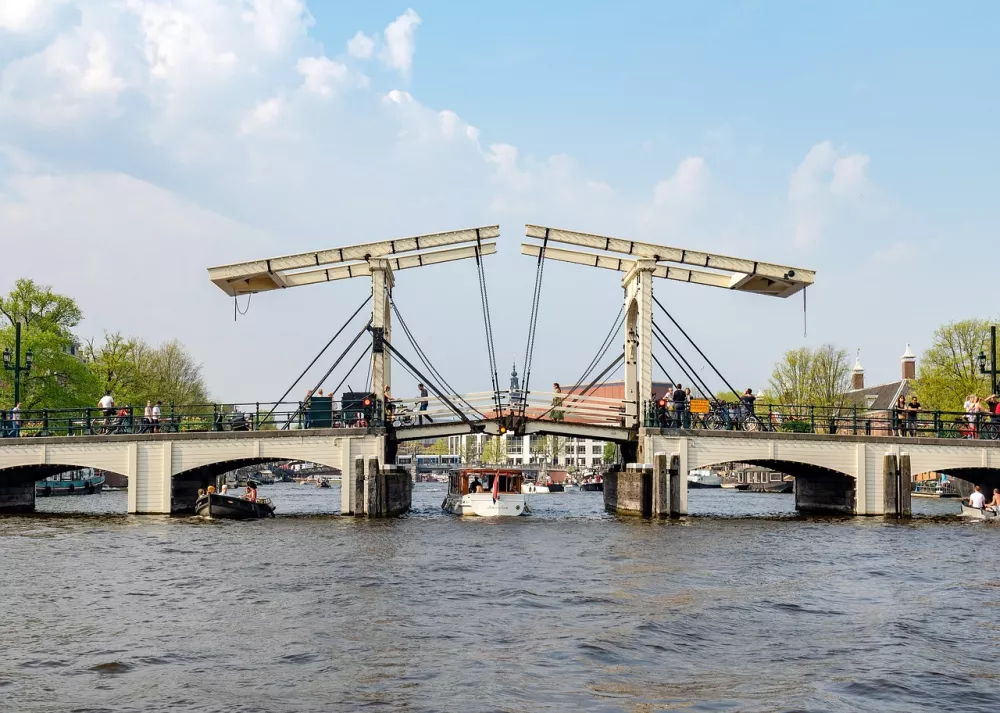
Jordaan District – A trendy area full of galleries, cafes, boutiques and narrow streets. You can enjoy a pleasant and relaxed atmosphere here all day and night. Evening walks along the embankments are definitely worth it. The Jordaan district served as a working-class and immigrant area in the 17th century, which quickly became one of the most densely populated parts of the city - at the turn of the 19th and 20th centuries, up to 80,000 people lived here in small houses without sewage and running water.
Address: Jordaan extends west of the Central Station, between the canals Prinsengracht, Lijnbaansgracht, Brouwersgracht and Leidsegracht.
Albert Cuyp Market – The largest and busiest outdoor market in the Netherlands and the largest daily market in Europe. The market has over 300 stalls offering everything from fresh food, flowers and spices to clothes, souvenirs and typical Dutch specialities. Among the most popular delicacies are the freshly prepared stroopwafels, which you can taste right from the grill. Open-air markets have been operating here since the early 20th century. The market is open from Monday to Saturday, closing at 5pm.
Address: Albert Cuypstraat, Amsterdam.
Heineken Experience – An interactive museum mapping the history and production of the famous Heineken beer, which originates from Amsterdam. The museum is located in the historic brewery building. Visitors can walk through four floors full of historical artifacts, interactive exhibits and, for those over 18, even taste beers. One of the most interesting experiences is the 4D attraction “Brew Your Ride”, thanks to which you can experience what it is like to be a Heineken beer bottle on its journey through production.
Address: Stadhouderskade 78, Amsterdam.
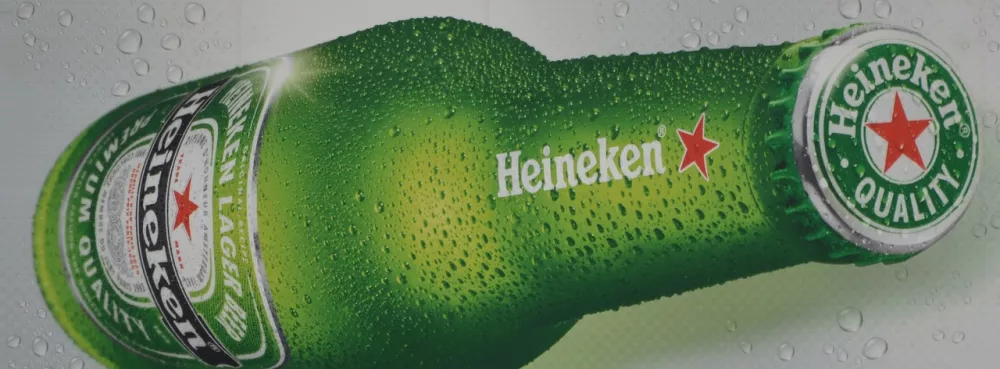
Vondelpark – The largest public park in the city, a popular place for relaxation and picnics. In addition to greenery and lots of water, you can also enjoy an open-air theater here. You can also see wild tropical parrots here - bright green small alexandrias (Psittacula krameri). These parrots began to nest here in the 1970s and are now integral residents of the park.
Address: Vondelpark, Amsterdam. The main entrance is from Stadhouderskade, near Leidseplein and Museumplein.
Red Light District – A famous part of the city with sex shops, nightlife and a controversial history. The Red Light District (De Wallen) in Amsterdam has a long history that dates back to the Middle Ages. The first mentions of this area as a place associated with prostitution date back to the 14th century. At that time, Amsterdam was one of the major port cities, and the presence of sailors led to the establishment of establishments offering entertainment and services. Prostitution was tolerated by the city because it brought in considerable income. Attitudes towards prostitution have changed throughout history. In the Netherlands, it has traditionally been regulated rather than banned. In modern times, De Wallen has become an iconic symbol of the Netherlands' liberal approach to sex work. The district has over 4,000 permanent residents and, in addition to erotic establishments, you will also find galleries, cafes, restaurants and museums, such as the Marijuana and Hash Museum or the Prostitution Museum.
Address: De Wallen, Amsterdam.
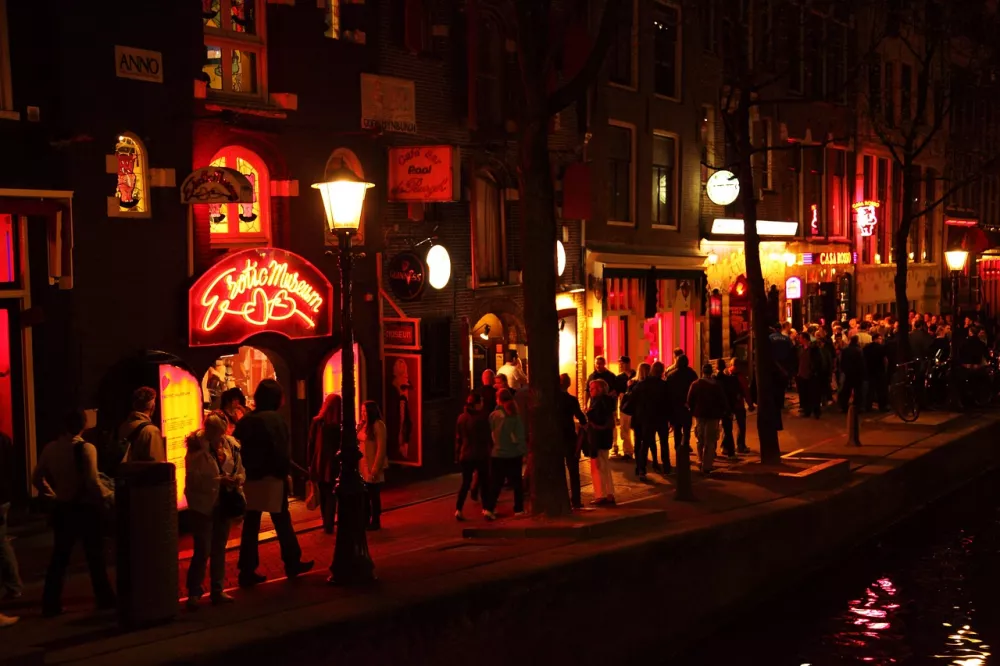
Accommodation
In Amsterdam, a city woven with canals, you can choose all kinds of accommodation, from modest hostels to cozy apartments in narrow houses of Amsterdam, family guesthouses, classic hotels to luxury accommodation with a high standard of services and comfortable rooms.
You can enjoy luxury, for example, at Pillows Grand Boutique Hotel Maurits at the Park - Small Luxury Hotels. This 5* hotel is located near the city center, right next to the Oosterpark. Guests can use the wellness and fitness center including a beauty salon and sauna, a garden and paid private parking. You can enjoy refreshments in the restaurant or on the terrace by the bar.
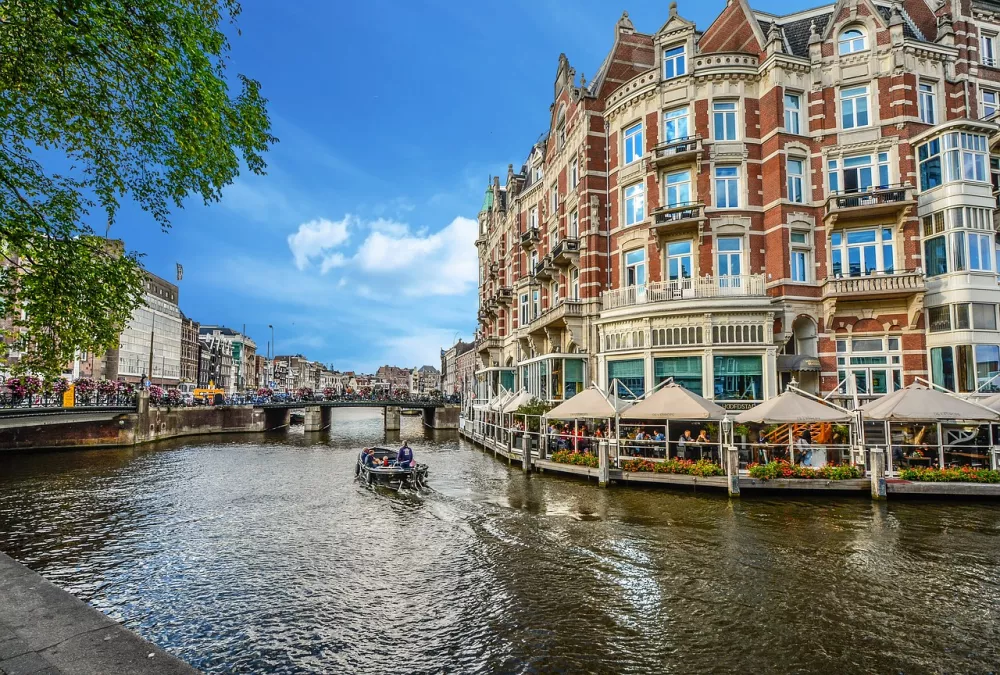
The 4* The Hendrick's Hotel is located in the center of Amsterdam at the Oosterdok harbor. The 24-hour reception offers concierge services and luggage storage. They can arrange a parking garage or bicycle rental. Guests can relax at the bar or by the fireplace in the common room.
Cheaper accommodation for backpackers and families with children in the city center is offered by the 3* Tourist Inn Hotel. You can book a bed in a shared room, a double room or a family room. The 24-hour reception desk provides tourist information and luggage storage. The hotel has a bar, lounge and mini-market.
Boat & Boost Amsterdam offers typical Amsterdam accommodation on a boat near the city center. You can choose either a classic room with a double bed or a superior room with a private jacuzzi, sauna and fireplace. Guests also have a terrace with seating on the upper deck. They can lend you bicycles for free for trips around the area.
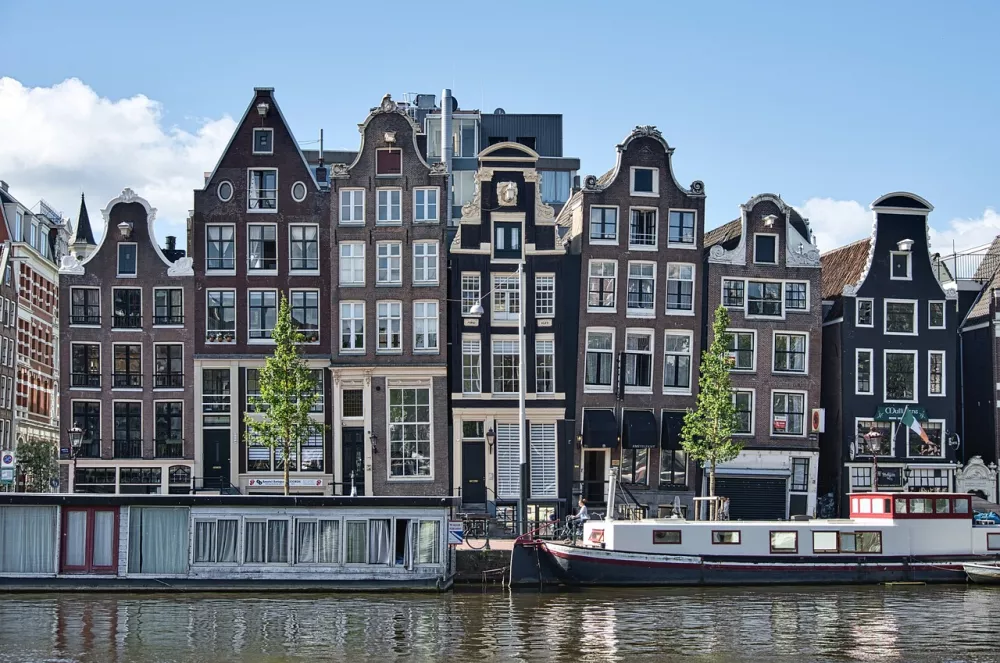
The Dutch love camping, so we will also offer you information about a campsite 3 km from the city center. Surprisingly, Camping Vliegenbos is not located by the water, but by a park. Therefore, you can enjoy pleasant living in the countryside here. The campsite offers accommodation in family holiday homes with a terrace. You have a shared kitchen and toilets at your disposal. There are restaurants and vending machines for drinks and snacks on site.
For a complete offer of accommodation in Amsterdam, we recommend using A-HOTEL.com or Booking.com.
Typical food and drink
Haring (herring) – The national dish of the Dutch. Fresh or pickled herring is often served with onions and pickled cucumbers.
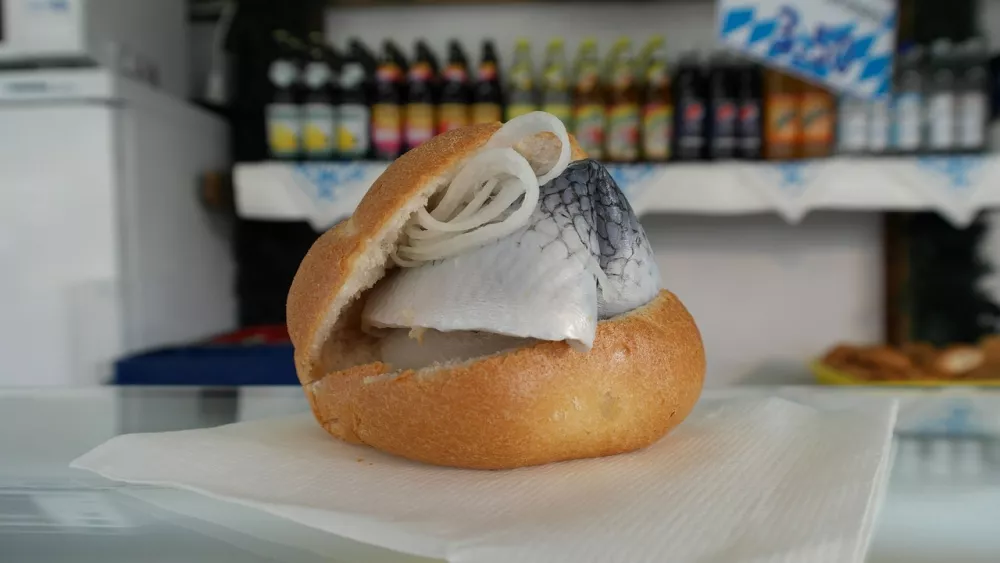
Stroopwafels - A sweet treat consisting of two thin wafers connected by caramel syrup.
Cheese – The Netherlands produces a lot of cheese, which is why locals often eat it, whether for breakfast, in salads or sandwiches. The most common ones are Gouda and Eidam.
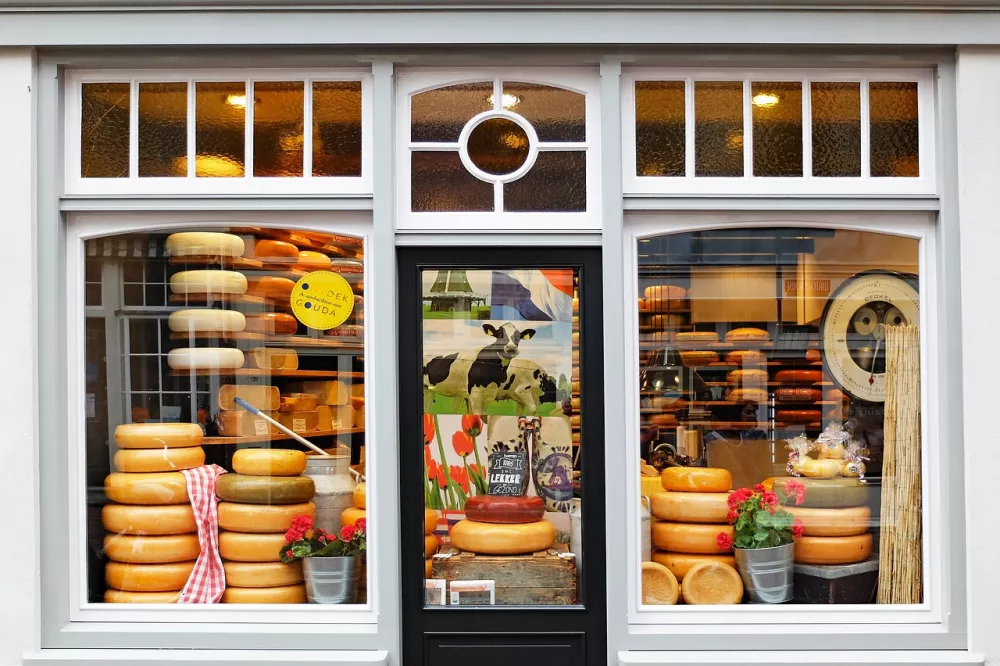
Poffertjes - Mini pancakes made from yeast dough, served with butter and powdered sugar.
Rijsttafel - A dish inspired by Indonesian cuisine, including many small courses.
Genever - Traditional Dutch gin, often served neat or in cocktails.
Beer – Amsterdam is home to Heineken and a number of other local breweries, such as Brouwerij 't IJ.
Coffee – Locals also like coffee, which is often served with a small stroopwafel or a piece of chocolate.
Practical travel tips
The best way to get around Amsterdam is by bike. The ride is mostly flat, so an older bike without gears will do. Rent a bike, but be safe, follow the rules and watch out for trams and pedestrians.
For convenient public transport, including trams, buses and the metro, you can buy an OV-chipkaart.
You can explore the city centre and most of the main attractions on foot.
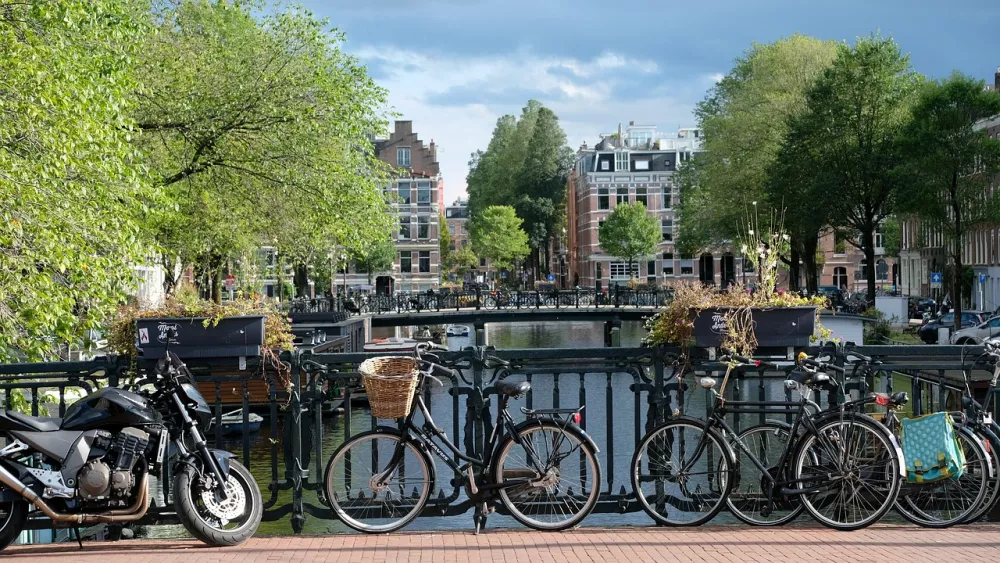
Book your accommodation well in advance, especially during the high season (spring and summer). Popular areas are the Jordaan, De Pijp or the canal area.
Book museum tickets (such as the Rijksmuseum or Van Gogh Museum) online in advance to avoid queues.
If you want to visit the Anne Frank House, expect to need to book several weeks in advance.
Enjoy a canal cruise and discover the city from the water. There are many options to choose from, from private boats to larger group tours.
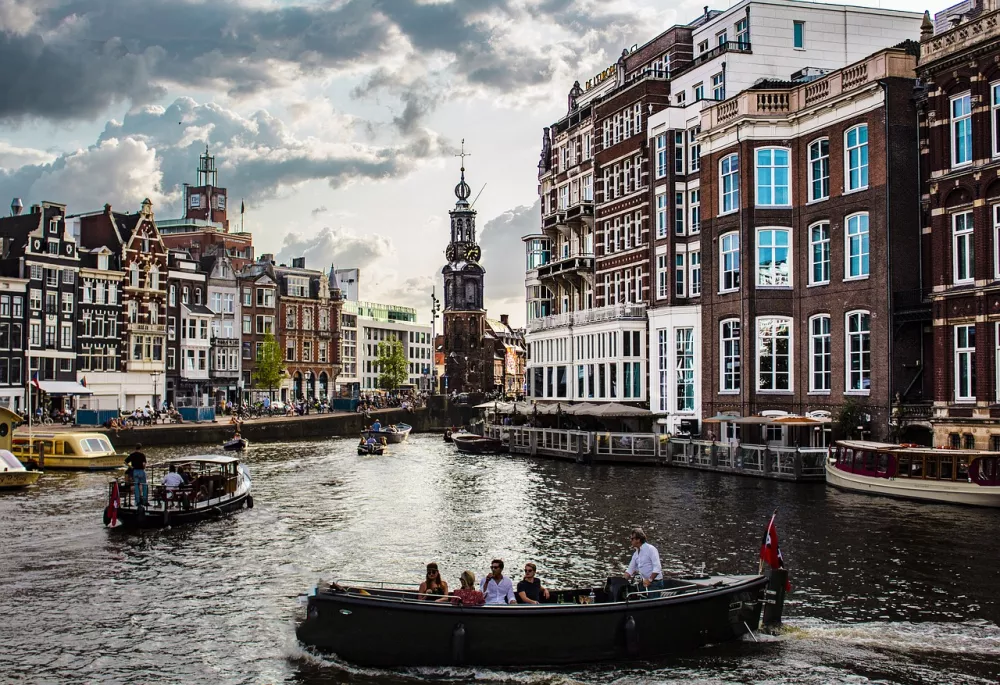
Be careful of pickpockets, especially in busy tourist areas like the de Walen district or on crowded public transport.
If you want to try local specialties in coffee shops, be careful and choose reputable establishments. In Amsterdam, only people over the age of 18 are allowed to enter a coffee shop. One person can buy up to 5 grams of the drug at a time. However, all alcohol consumption is prohibited here.

For cheaper food, try local markets such as Albert Cuypmarkt or Foodhallen. Sample typical Dutch specialties such as stroopwafels, herring or cheeses.
When to visit Amsterdam? In spring, you can admire the blooming Keukenhof and the surrounding tulip fields, and at the end of April, the whole of the Netherlands dresses in orange and celebrates King's Day. In summer, the city is lively but busy. Autumn and winter offer a calmer atmosphere, but expect rain.
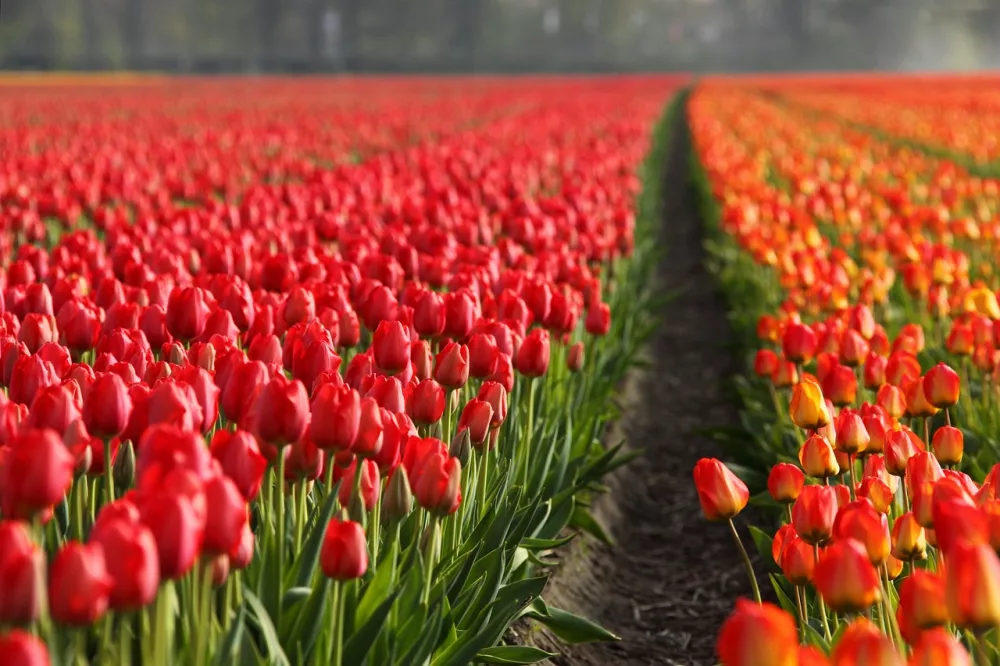
Be quiet and orderly, especially in residential areas. When cycling, use cycle paths and respect the rules of the road.
👍 Our tip: Fabrique des Lumières – visual experiences in a former gasworks. Fabrique des Lumières in the historic Westergasfabriek offers an unconventional artistic experience. Using cutting-edge technology, they project visual shows onto huge walls and floors. Exhibitions are often dedicated to famous authors – from Van Gogh to Klimt – it is a unique fusion experience of lights, music and colours, which changes every few months.
Weather
Amsterdam has an oceanic climate, influenced by the proximity of the North Sea. You can expect cooler summers and mild winters.
During the mild summer, average temperatures are around 20–22°C. Tropical heat is rare, but warm days do occur occasionally.
During the cold winters, average temperatures drop to 3–5°C. Snow rarely falls and frost is rare.
It rains frequently throughout the year, but usually in short showers. Therefore, you will need an umbrella or raincoat. You can expect the least precipitation in spring, the most in autumn.
The wind blows stronger, especially in autumn and winter.
Overall, the weather in Amsterdam is unpredictable, so be prepared for different conditions during the day.
Famous people
Rembrandt van Rijn (1606–1669) - One of the most famous painters of the Dutch Golden Age. He lived and worked in Amsterdam, where you can find his house, which has been converted into a museum (Rembrandt House).
Vincent van Gogh (1853–1890) - Although he lived mostly elsewhere, the Van Gogh Museum in Amsterdam houses the largest collection of his works.
Anne Frank (1929–1945) - A young girl who became a symbol of the Holocaust thanks to her diary written during World War II. The house where she hid, now the Anne Frank House, is one of the city's main attractions.
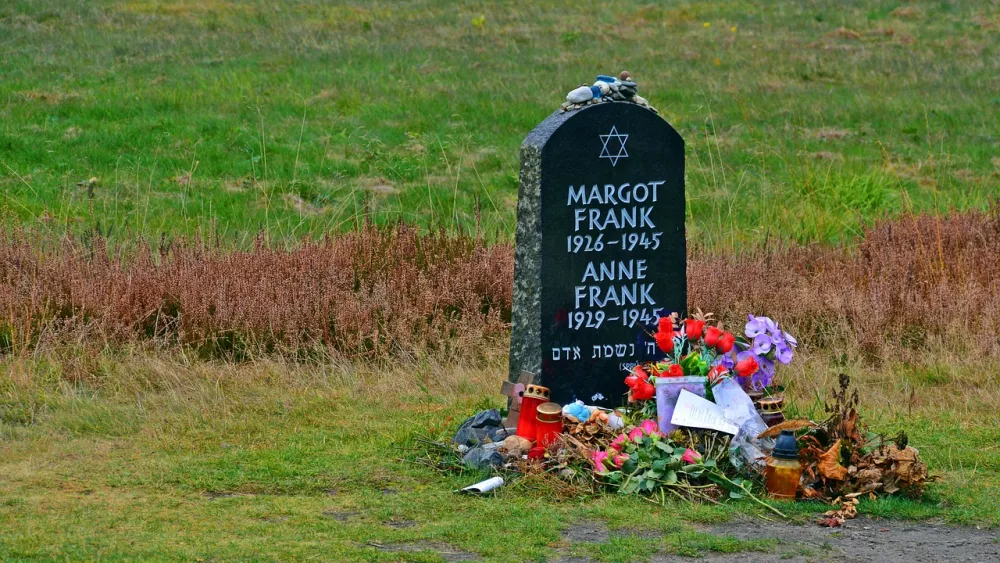
Baruch Spinoza (1632–1977) - A renowned 17th-century philosopher whose radical ideas influenced European philosophy. He was one of the rationalists and the first critical readers of the Bible. Spinoza lived and worked in Amsterdam.
Willem Drees (1886–1988) - A prominent Dutch politician and prime minister who shaped the modern Netherlands.
Multatuli (1820 – 1887, real name Eduard Douwes Dekker) - One of the most important Dutch writers, known for his criticism of colonialism in the book Max Havelaar.
André Hazes (1951 – 2004) - A popular actor and singer of traditional Dutch music (levenslied), whose songs are still sung.
Johan Cruyff (1947 – 2016) - A legendary footballer and coach who significantly influenced modern football. He played for the national team, local Ajax Amsterdam and FC Barcelona.
